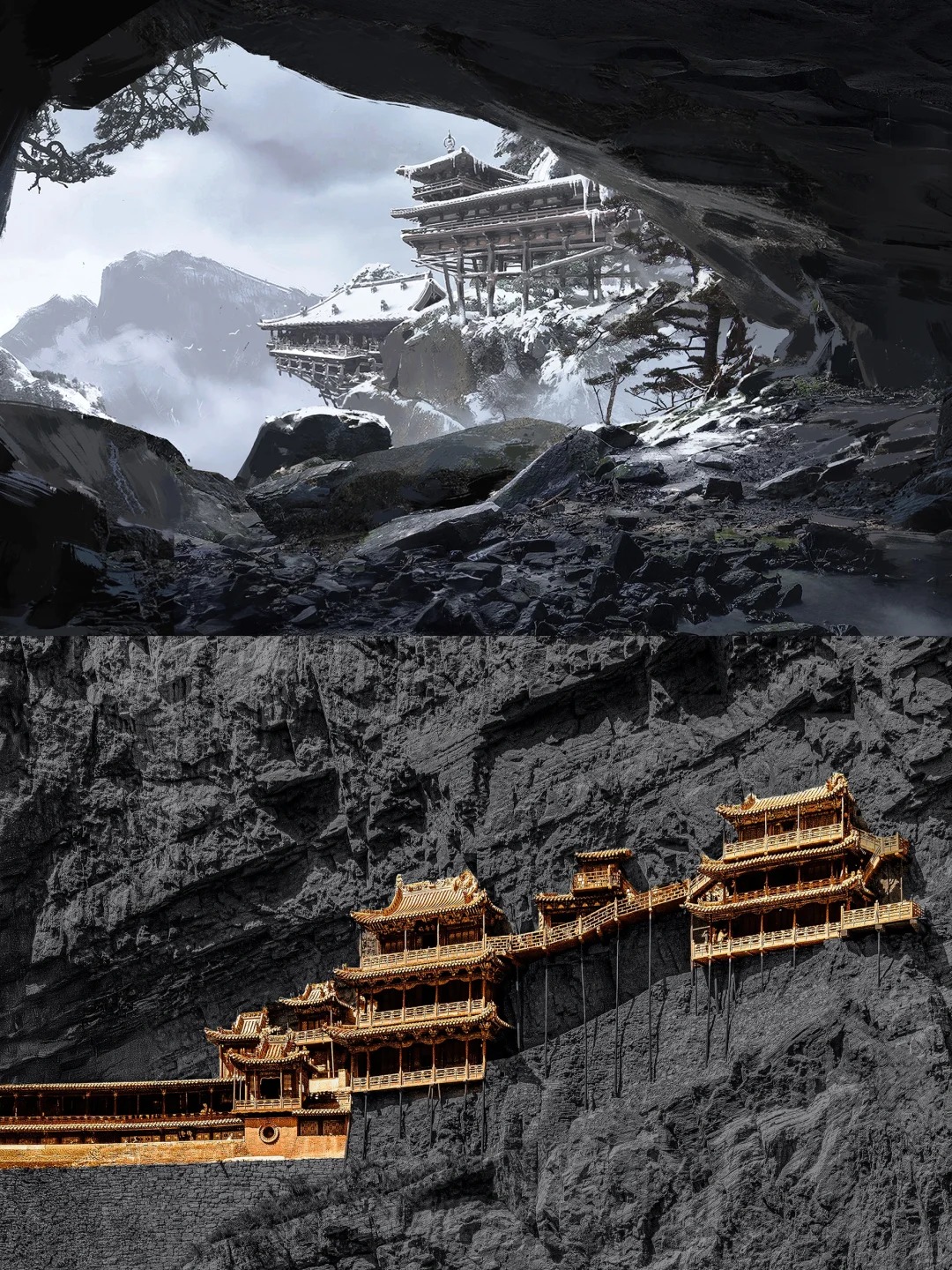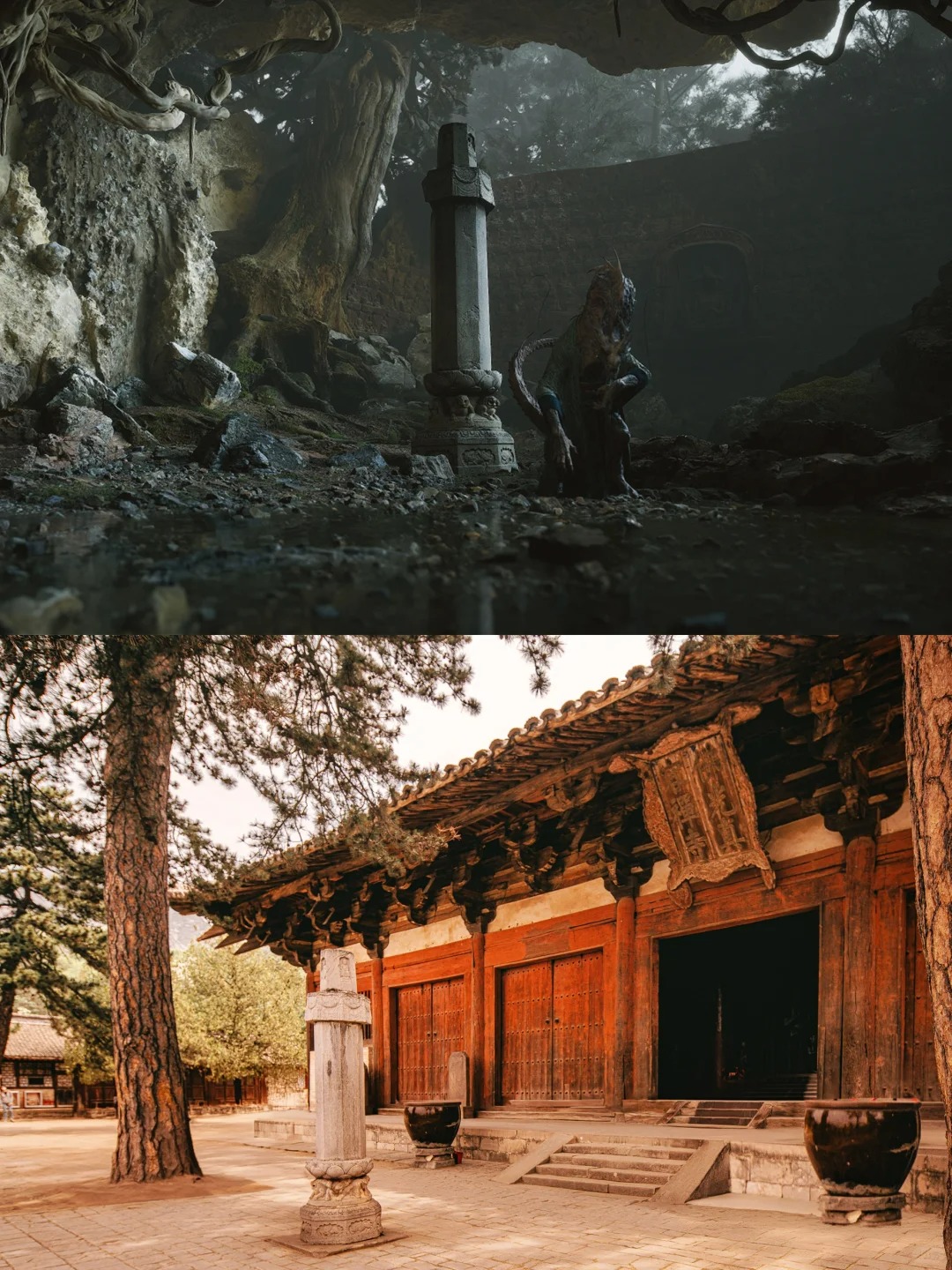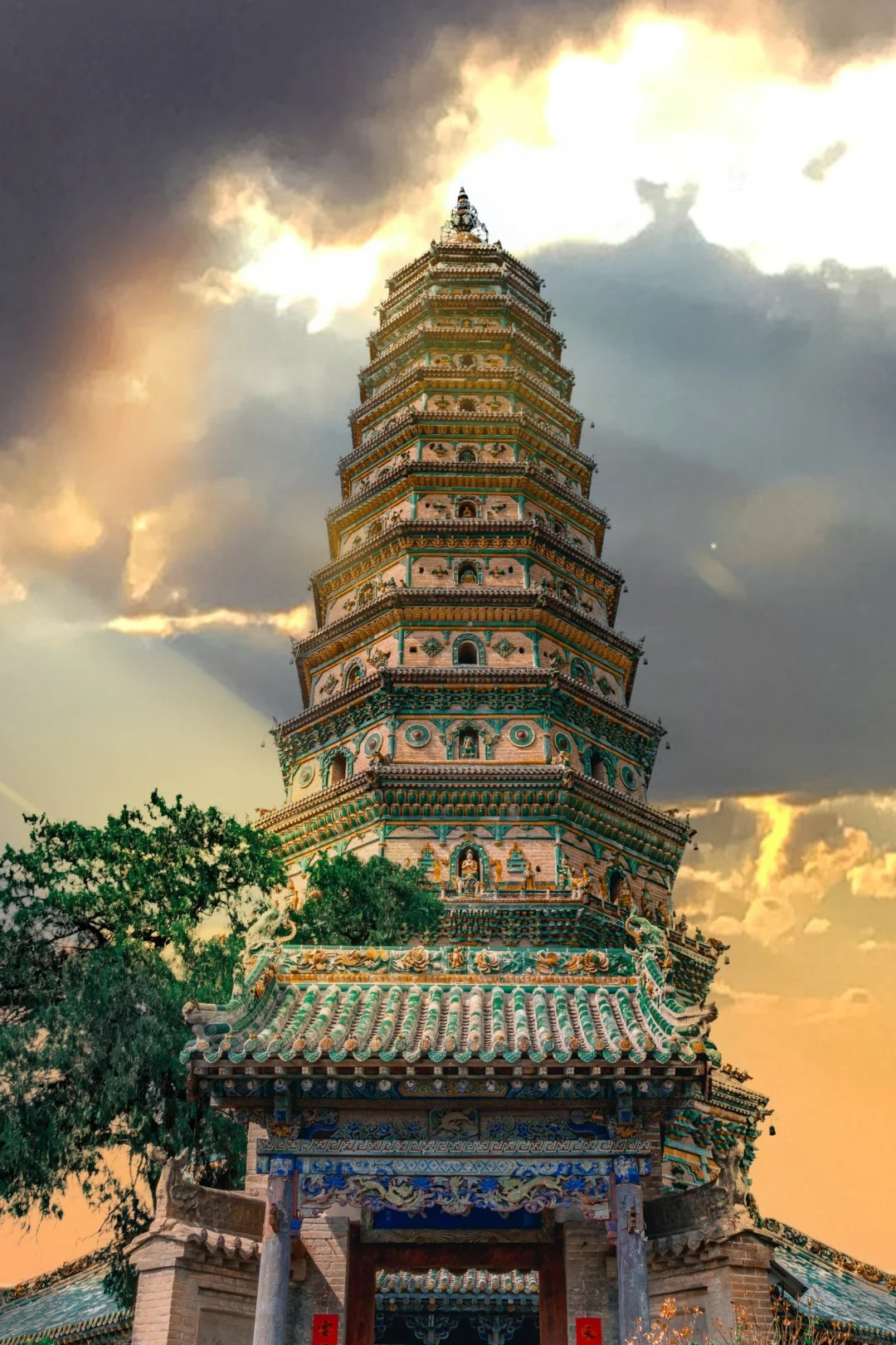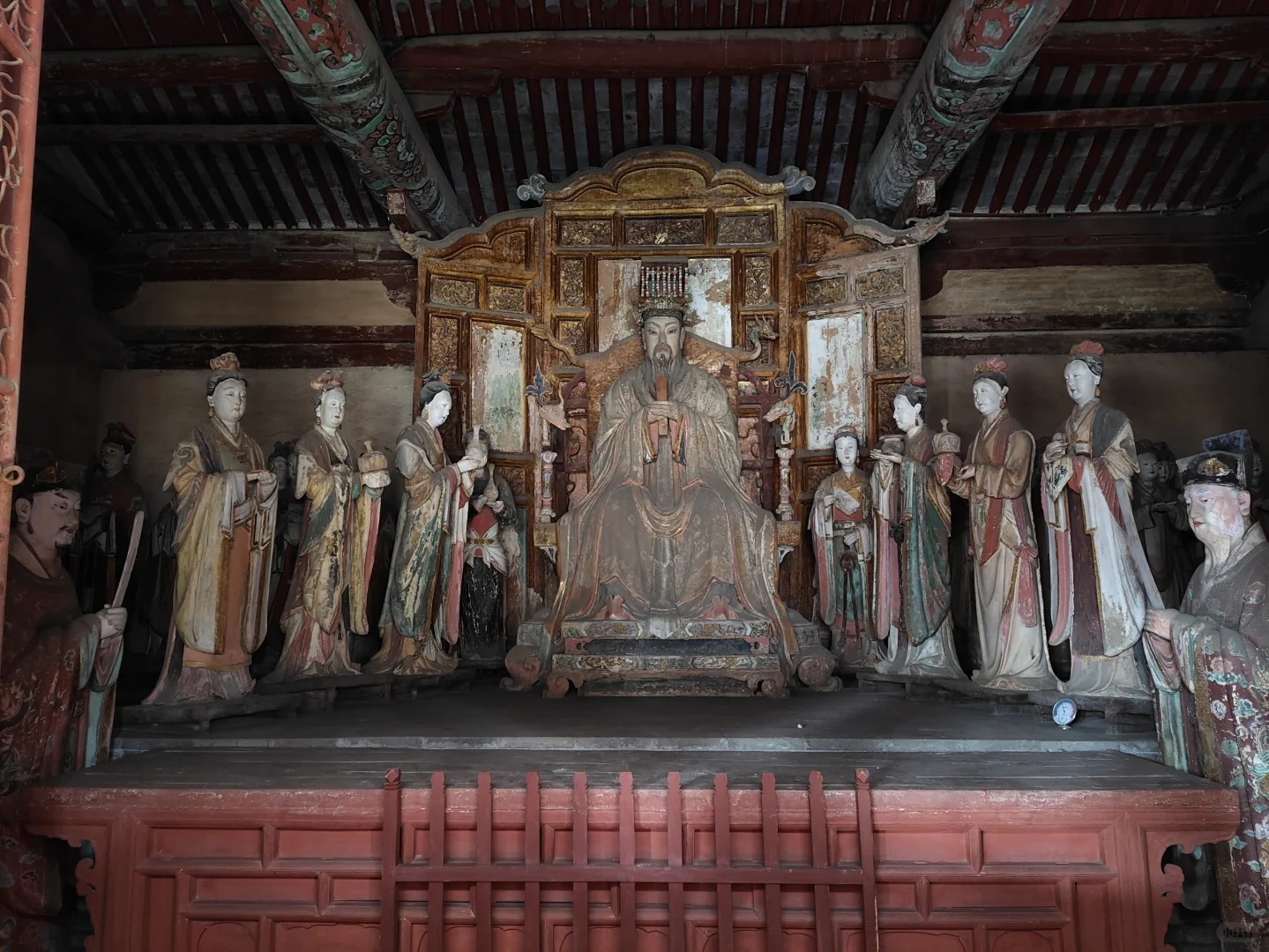Introduction: Where Ancient China Meets Modern Gaming
In the realm of video games, “Black Myth: Wukong” stands out not just for its gameplay but for its meticulous recreation of China’s cultural heritage. This article takes you on a virtual journey through Shanxi province, exploring how the game transforms real-world attractions into fantastical digital landscapes. From towering pagodas to mysterious grottoes, we’ll uncover the historical significance of these sites and their reimagined roles in the game world.
Datong: The Heartland of Ancient Wonders
| Location | Historical Significance | In-Game Representation |
|---|---|---|
| Yungang Grottoes: Carved Echoes of the Past | A UNESCO World Heritage site, the Yungang Grottoes house 51,000 Buddhist statues dating back to the 5th and 6th centuries. | Players navigate a labyrinthine network of caves, where ancient statues come to life and stone carvings hide secrets of forgotten martial arts techniques. |
| Hanging Temple: Defying Gravity and Logic | Built more than 1,500 years ago, this architectural marvel seems to defy gravity, clinging to a cliff face 75 meters above the ground. | A vertigo-inducing vertical level where players must balance on precarious wooden walkways while battling mythical creatures. |
| Jueshan Temple: Serenity Amidst Chaos | Dating back to the Tang Dynasty, this temple showcases exquisite Chinese architectural styles. | A peaceful sanctuary where players can recover, meditate, and unlock new spiritual abilities. |
| Shanhua Temple: A Testament to Resilience | One of the few surviving Liao Dynasty temples, known for its intricate dougong bracket systems. | An area where players solve architectural puzzles based on traditional Chinese construction techniques. |
| Yong’an Temple: Guardian of Ancient Wisdom | Home to precious Buddhist scriptures and artifacts. | A repository of in-game lore, where players piece together the backstory of the game world. |
Shuozhou: Where Wood Meets Wonder
| Location | Historical Significance | In-Game Representation |
|---|---|---|
| Chongfu Temple: Echoes of Zen | A key center for Chan (Zen) Buddhism during the Tang and Song dynasties. | Players engage in mind-bending puzzles that reflect Zen koans and philosophy. |
| Yingxian Wooden Pagoda: A Timber Titan | The oldest and tallest wooden pagoda in China, standing at 67 meters high. | A multi-level climbing challenge where each floor presents unique obstacles and enemies inspired by the pagoda’s history. |
Xinzhou: Temples That Transcend Time
| Location | Historical Significance | In-Game Representation |
|---|---|---|
| Foguang Temple: Light of Buddha’s Teachings | Contains the oldest preserved wooden building in China, dating back to 857 CE. | A mystical realm where past and present collide, allowing players to witness key historical events. |
| Nanchan Temple: Whispers of the Tang Dynasty | Houses the oldest preserved wooden building in China, built in 782 CE. | A time-bending area where players must solve puzzles by altering the temple’s appearance between different historical periods. |
Jinzhong: Sacred Spaces and Ancient Wisdom
| Location | Historical Significance | In-Game Representation |
|---|---|---|
| Zhenguo Temple: Liao Dynasty’s Lasting Legacy | Features the oldest intact Liao dynasty building, the Wanfo (Ten Thousand Buddhas) Hall. | A hub where players can learn new skills from ancient masters, each representing a different martial arts style. |
| Shuanglin Temple: Gallery of Painted Sculptures | Known as the “Museum of Colored Sculptures” for its 2,000+ colorful clay statues. | A surreal level where statues come to life, each granting unique powers or challenging the player in combat. |
Linfen: Where Divinity Meets Earth
| Location | Historical Significance | In-Game Representation |
|---|---|---|
| Xiaoxitian Temple: Heaven on Earth | A Daoist temple known for its unique architectural style blending Daoist and Buddhist elements. | A realm where players navigate between the mortal world and the heavenly realm, facing challenges in both. |
| Guangsheng Temple: Ascending to Enlightenment | A multi-tiered temple complex featuring the famous “Flying Rainbow Pagoda.” | A vertical challenge where players ascend through increasingly difficult levels, each representing a step towards enlightenment. |
Changzhi: Guardians of Compassion and Wisdom
| Location | Historical Significance | In-Game Representation |
|---|---|---|
| Guanyin Hall: Sanctuary of the Merciful | Dedicated to Guanyin, the bodhisattva of compassion, featuring intricate wooden carvings. | A serene area where players face moral dilemmas, their choices affecting their character’s abilities and the game’s storyline. |
| Chongqing Temple: Bastion of Buddhist Learning | An important center for Buddhist studies, known for its vast library of scriptures. | A knowledge hub where players decipher ancient texts to unlock powerful techniques and uncover the game’s deeper lore. |
Jincheng: Where Deities Dwell
| Location | Historical Significance | In-Game Representation |
|---|---|---|
| Jade Emperor Temple: Celestial Court on Earth | Dedicated to the Jade Emperor, the supreme deity in Chinese folk religion. | An otherworldly palace where players face trials set by various Chinese deities, each challenge reflecting the deity’s domain. |
| Tiefo Temple: The Iron Buddha’s Domain | Home to a unique iron Buddha statue, showcasing ancient Chinese metallurgy. | A level focused on elemental challenges, where players must master the properties of metal to progress. |
| Xixi Erxian Temple: Dual Paths of Immortality | Dedicated to two legendary Daoist immortals, representing different paths to enlightenment. | A dual-natured realm where players must balance opposing forces to overcome obstacles and enemies. |
Yuncheng: Towers, Palaces, and Legendary Figures
| Location | Historical Significance | In-Game Representation |
|---|---|---|
| Guanque Tower: Watching Over the Land | A Tang Dynasty tower offering panoramic views of the surrounding landscape. | A strategic vantage point where players plan their journey, uncovering map secrets and hidden locations. |
| Yongle Palace: Daoist Artistry Preserved | Contains some of the best-preserved Yuan Dynasty murals, depicting Daoist themes and stories. | An artistic wonderland where players’ actions bring murals to life, interacting with scenes from Chinese mythology. |
| Guandi Temple: Honoring the God of War | Dedicated to Guan Yu, a historical figure deified as the God of War. | An arena where players test their combat skills against increasingly challenging opponents, each embodying different aspects of Chinese martial arts. |
Attractions in “Black Myth: Wukong” – Historical vs. Game Representation
| Attraction | Historical Significance | In-Game Representation | Player Experience |
|---|---|---|---|
| Yungang Grottoes | 51,000 Buddhist statues, UNESCO site | Mystical cave system | Exploration, puzzle-solving |
| Hanging Temple | Gravity-defying architecture | Vertical climbing challenge | Platforming, combat |
| Yingxian Wooden Pagoda | Tallest wooden pagoda in China | Multi-level climbing challenge | Vertical progression, historical learning |
| Foguang Temple | Oldest preserved wooden building | Time-bending realm | Historical immersion, puzzle-solving |
| Zhenguo Temple | Oldest Liao dynasty building | Martial arts training hub | Skill acquisition, character development |
| Guanque Tower | Tang Dynasty panoramic tower | Strategic vantage point | World exploration, planning |
The Cultural Impact: Beyond Gaming
“Black Myth: Wukong” transcends traditional gaming boundaries by serving as a digital ambassador for Chinese culture. Its impact extends far beyond entertainment:
- Educational Value: Players absorb Chinese history, architecture, and mythology through immersive gameplay.
- Cultural Preservation: The game digitally preserves historical sites, allowing global access to China’s cultural heritage.
- Tourism Boost: Increased interest in visiting the real-world locations featured in the game.
- Artistic Inspiration: The game’s visual representation of these sites inspires artists and designers worldwide.
- Cross-Cultural Understanding: Players from diverse backgrounds gain insight into Chinese culture and values.
Challenges in Digital Recreation
Creating a game that balances historical accuracy with engaging gameplay presents unique challenges:
- Accuracy vs. Artistic License: Developers must decide when to adhere strictly to historical facts and when to take creative liberties.
- Cultural Sensitivity: Representing religious and cultural sites respectfully while making them part of an action game.
- Technical Limitations: Recreating intricate architectural details within the constraints of game engines.
- Accessibility: Making complex historical and cultural concepts understandable to a global audience.

Balancing History and Gameplay in “Black Myth: Wukong”
| Aspect | Historical Accuracy | Gameplay Enhancement | Balance Achieved |
|---|---|---|---|
| Architecture | Highly detailed recreations | Added fantastical elements | 80% historical, 20% fantasy |
| Cultural Concepts | Based on authentic beliefs | Simplified for gameplay | 70% authentic, 30% adapted |
| Historical Events | References real history | Mythologized for story | 60% factual, 40% fictionalized |
| Character Designs | Inspired by historical figures | Exaggerated for visual appeal | 50% historical, 50% artistic |
Conclusion: A New Frontier in Cultural Gaming
“Black Myth: Wukong” represents a groundbreaking approach to cultural representation in video games. By transforming Shanxi’s rich historical tapestry into an interactive digital landscape, it offers players a unique window into Chinese heritage. This innovative blend of entertainment and education sets a new standard for how games can serve as cultural ambassadors.
As players traverse the digital recreations of Shanxi’s wonders, they’re not just playing a game – they’re embarking on a journey through time, culture, and imagination. “Black Myth: Wukong” proves that video games can be more than mere entertainment; they can be portals to understanding and appreciating the depth and beauty of world cultures.
In bridging the gap between ancient traditions and modern technology, “Black Myth: Wukong” paves the way for a new genre of culturally rich, educationally valuable gaming experiences. It invites players to not just play, but to learn, explore, and connect with the cultural heritage of China in ways never before possible.










